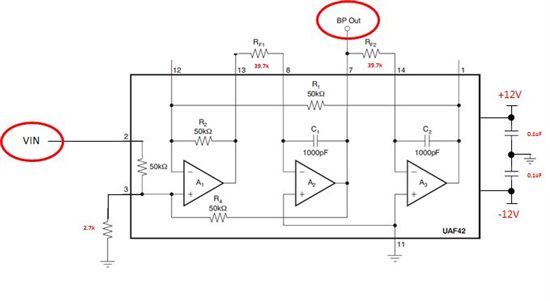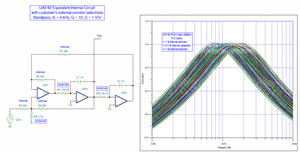Hi,
I have question regarding the variation of UAF42 BPF characteristics from a customer.
They set the center frequency a few KHz and tried to get x1.0 gain at that center frequency with UAF42.
They assumed the variation of gain is under 3,4% as Max and have observed the smaller variation with almost device.
However, they found a attenuation ratio of the gain was under 9% with a UAF42 and assumed that is abnormal performance as UAF42.
Regarding the resistor value for example R2, R4 variation should be under 1%.
Thus, customer could not understand the reason that the over 9% gain attenuation was observed.
Would it be possible for you to tell the reason of the gain attenuation that you can expect?
Do you think it is possible the inside "C1 1000pF variation" and inside "amp characteristics variation" made the attenuation ?
Or is it possible the variation of center frequency ( cut off frequency ) of BPF is the reason for the gain attenuation ?
Best Regards,
Charlie Maehira/ Japan Disty



